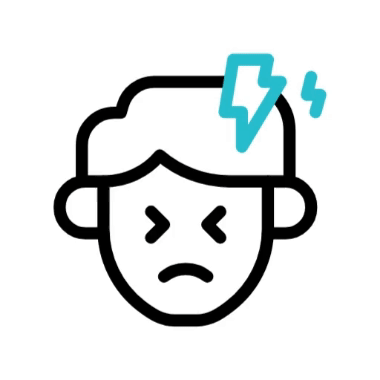
Neck Pain
Neck pain is a very common issue and affects 30% of people every year. Causes can range from an acute injury like whiplash from sports or a car accident to longer-term strain and stiffness from using technology sometimes called “Tech Neck”. Neck pain is the 4th leading cause of disability worldwide.1
Your neck is the most mobile and easily injured part of your spine. It holds your head up and carries a lot of the load from your shoulders arms and hands. It is made up of bones, joints, nerves, muscles, ligaments, tendons, fascia, blood vessels and organs and disruption to any of these tissues could create stiffness, tightness or pain. Your neck also carries your delicate spinal cord from the base of your brain to the rest of your body so you need it to be functioning well. Whether it’s a mild ache or stiffness that might slow you down or a severe pain that is completely debilitating it’s a good idea to have your spine checked by a professional.
Getting to the source
In the past when you’ve had neck pain doctors or therapists would only look at the site of pain to find the problem. What we now realise is that the painful area is usually not the source of the problem. In the vast majority of cases the area we are feeling the pain is where the body is compensating for some other problem. A good example of this is if you had a leak in your roof (real problem) that created a puddle on the floor (compensation). The puddle would probably be the thing you notice first. If you mopped it up it would most likely come back again and again cause a lot of frustration until you got to find and fix the leak in the roof.
While pain killers, lotions, massages, pain modulating devices and even surgery might be able to numb the pain temporarily they will not be able to address the underlying cause and will only force the body to set up other compensation patterns that will cause damage elsewhere.
Posture
A solution lies in looking at what is happening in the whole body and not just at the site of pain. A very useful way to do this is to assess posture and analyse how your body is holding itself upright. This gives you a window into your spine and nervous system so a person trained in postural analysis can determine where the source might be. By taking a look at the people around you and seeing how many people walk around with their head jutting forward on their shoulders you will see how common these issues can be.
Armed with that information you can now find a professional who can help by working with your body to correct those things that the body can’t and to improve your lifestyle to help your body improve the things that it can. Lifestyle changes might begin with changes in how you sit, sleep and stand and move onto corrective exercises as you are ready. Chiropractic has been repeatedly shown to be very effective for neck pain of various sorts and could help you.2
At Peak Chiropractic we are trained to thoroughly assess your body with postural analysis, functional testing, onsite digital X-rays (if necessary) and help to create a plan to relieve your pain, correct the underlying problem and get you back to your best. We are also able to work with your body to correct things that your body cannot and to counsel you in what you can do to help your body heal more effectively. To find out how we can help please call 021 671 3303.
References
1. Hoy D, March L, Brooks P, Blyth F, Woolf A. The global burden of low back pain: estimates from the Global Burden of Disease 2010 study. Annals of the Rheutamatic Diseases. 2014;73(6):968–974.
2. Baliki MN, Geha PY, Apkarian AV, Chialvo DR. Beyond feeling: chronic pain hurts the brain, disrupting the default-mode network dynamics. J Neurosci. 2008;28(6):1398–1403.
3. Smallwood RF, Laird AR, Ramage AE, et al. Structural brain anomalies and chronic pain: a quantitative meta-analysis of gray matter volume. J Pain. 2013;14(7):663–675.
4. Clar C, Tsertsvadze A, Court R, Hundt GL, Clarke A, Sutcliffe P. Clinical effectiveness of manual therapy for the management of musculoskeletal and non-musculoskeletal conditions: systematic review and update of UK evidence report. Chiropr Man Therap. 2014;22(1):12







